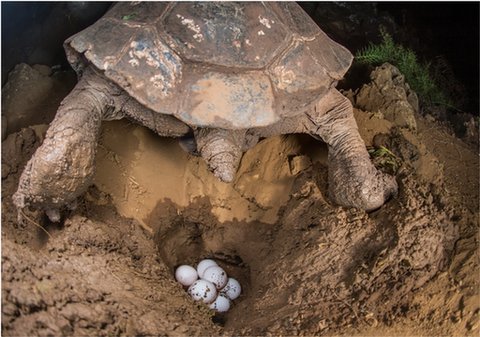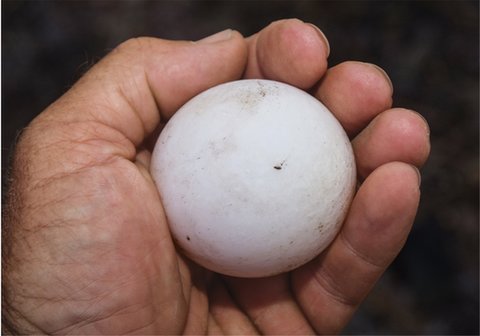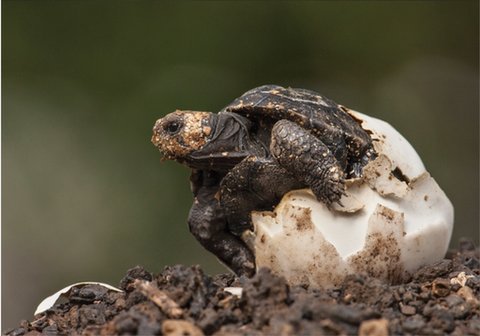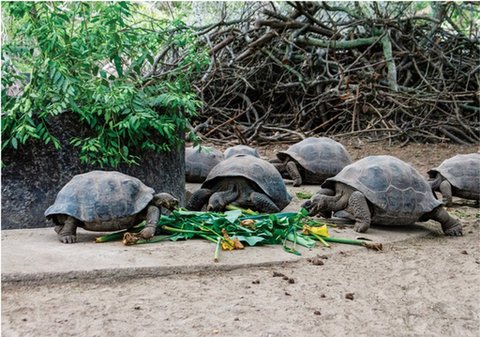Torebuildtortoisepopulationsinthewild,some arefirstraisedincaptivity.Here’showit works:
1
Inthewild,mothertortoiseslaytheireggsinholes.Theycoverthemwithsand.Whenscientistsfindtheburiedeggs,theybringthemtoarearing center.

2
Eacheggislabeled,weighed,andregistered.Theyarekeptinboxes.Theytake120daysto hatch.

3
Ahatchlingbreaksfreefromitsegg.Itfeedsonitsyolksacfor30 more days.

4
Fortwoyears,youngtortoisesarekeptinpens.Theseprotectthemfrompredators.Theylearntofindtheirown food.

5
Whentheyarefiveyearsold,theyareoldenoughtolookafterthemselves.Thentheyarereleasedtothe wild.

KeepingthePeace
Anotherconservationgoalistopreventconflictsbetweenhumansandtortoises.SantaCruz,SanCristóbal,andIsabelahavealreadyseen conflicts.
OnSantaCruz,tortoiseshaveeatenplastics.Othershavebeenhitbycars.Onewasattackedbystraydogs.ThepeopleoftheGalápagosknowandvaluethe treasure theyhaveinthegianttortoises.Theyaretryingmanywaystoprotect them.

Ababytortoisecrawlsacrossa leaf.
PROTECTTHENATURALWORLD
OneofNationalGeographic’sgoalsistohelpprotectEarth’swildplaces.HowdidthestoriesmakeyoufeelabouttheGalápagosIslands?Doyouthinkitisimportanttoprotect them?